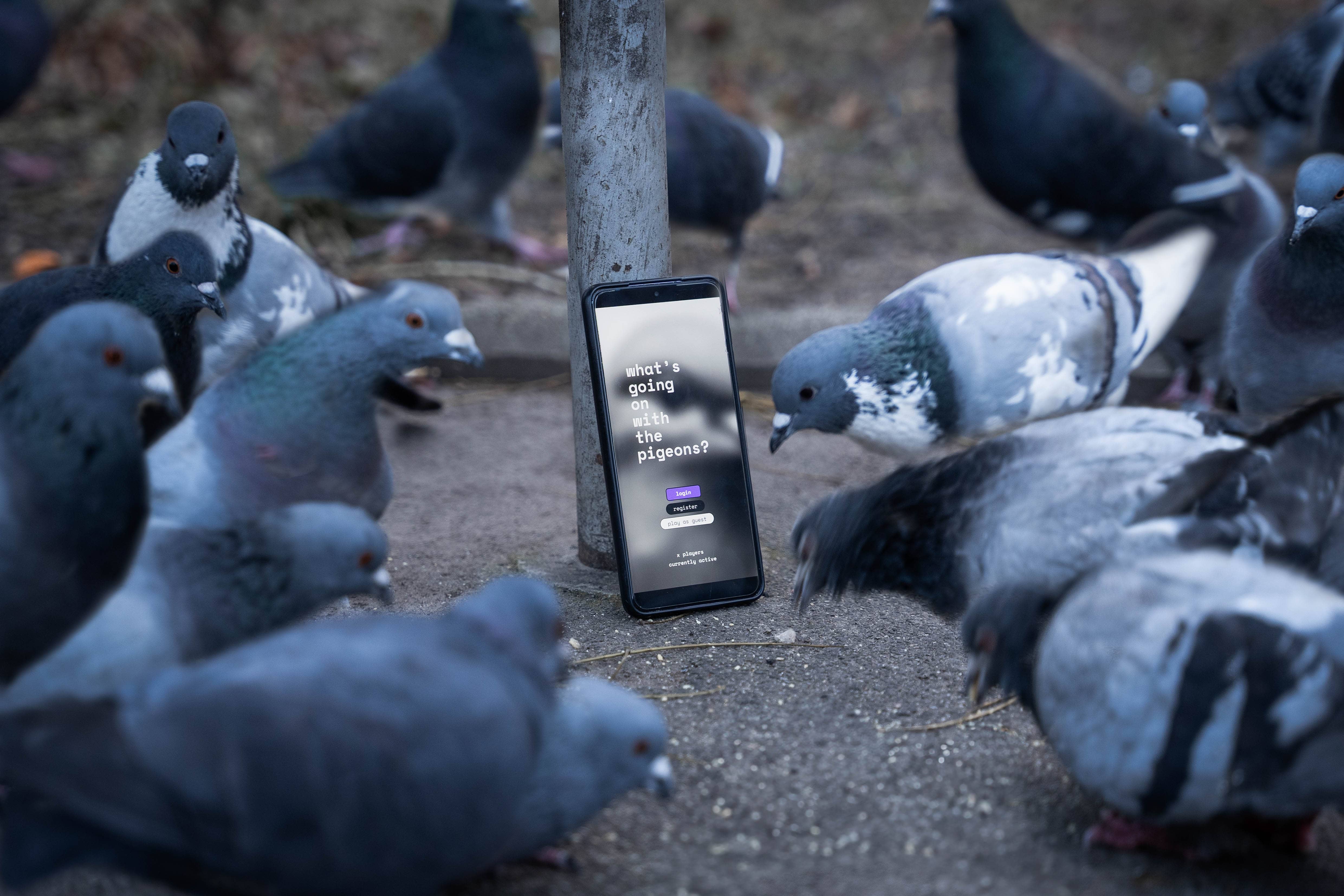Instead of following a pre-written storyline, this game serves as a dynamic framework, empowering players to collaboratively create and evolve the narrative. Guided by AI and enriched with real-time, location-specific information gathered from the web, the story is generated organically as players interact with their surroundings.
This collaborative experience unites all participants in solving a shared mystery. Players collectively influence the progression of the global story through votes, decisions, and discoveries, creating a sense of shared purpose and connection.
The game transforms the city into an alternate reality, blending imagination with physical spaces. It challenges players to rediscover well-known streets, forgotten corners, and hidden details of their environment. Through this lens, the urban landscape becomes a stage for collective storytelling, offering fresh perspectives on the ordinary and turning everyday spaces into sites of mystery and wonder.
“What's Going on with the Pigeons?” invites to see, question, and play with the world anew.
But why pigeons?
Pigeons—ubiquitous in urban spaces and long subjects of myths, folklore, and conspiracy theories—serve as the perfect narrative catalyst. Their mysterious presence invites players to question, observe, and reimagine the familiar world around them.
The intro video should immerse players into this universe of mystery, setting the tone for curiosity and creative exploration.

This intro video should immerse players into this universe of mystery, setting the tone for curiosity and creative exploration.
Players navigate the game through a dynamic map, uncovering reports and intel tied to real-world locations. Reports can only be accessed by visiting the places where they were created, encouraging exploration and curiosity. After investigating a location, players can collect associated intel to deepen their investigation. New reports are generated by making observations in public spaces, with location data and an algorithm weaving them into the global narrative. Observations can also be made at exisiting reports to continue the local narrative. Players can submit up to 3 favorite theories to headquarters every 24 hours, influencing the collective story development through democratic decision-making. Engage, explore, and shape the narrative!
After setting the goal of creating a game that encourages people to explore their city and collaborate, I began by interviewing people on the streets to understand what they enjoy in games and what motivates them to explore.
With no prior game design experience, I approached the project by combining user interviews, technical experimentation to determine what was feasible within a 3-month timeframe, and analog prototyping to test and refine the game mechanics.
To build the game, I started with the backend application using Flask and Python, developing a public API to playtest core functionalities while designing the user interface. To define backend structure and game mechanics, I mapped out detailed diagrams specifying necessary functions and data types.
The user interface underwent several iterations. Initial concepts were developed in Figma and tested as clickable prototypes to gather feedback and refine the design. The frontend was built using Next.js and Tailwind CSS, resulting in a progressive web app (PWA) that works seamlessly across Windows, macOS, Android, iOS, or directly in a browser.
User testing was central to the development process. At every stage, from the initial concept to the final prototype, I involved game testers to gather feedback. A diverse group of testers was selected, balancing those familiar with the game and new participants.
The current prototype includes a feedback button linked to a form where testers can report bugs and share their experiences. This ongoing feedback loop has been invaluable in shaping the game’s functionality and user experience.
After testing the latest prototype, players shared the following feedback:

This project offered a wealth of learning opportunities, particularly in prompt engineering to achieve desired outputs from AI. Since AI prompting can be opaque, extensive testing and adjustments were required, including input from various users, to ensure the generated reports were engaging and meaningful.
As mentioned, user and game testing played a pivotal role in refining the game. Iterative feedback not only enhanced the design but also helped identify key improvements and potential bugs. This collaborative, experimental approach allowed me to deliver a functional and engaging prototype within the set timeframe.
Thanks to the Design Investigations Team at Angewandte!
Special thanks to Friedrich Schadow, Chiara Kanya, Leo Mühlfeld, Julia Habarda, Damin Pierre, Tim Ficht, Alan Schiegl


